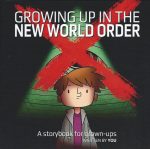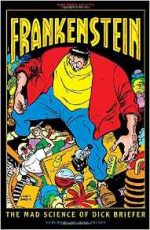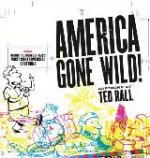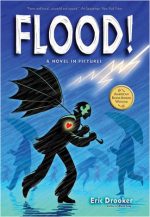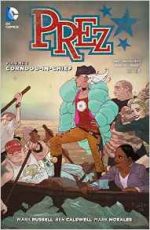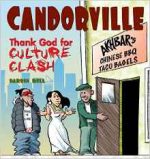
By Darrin Bell (Andrews McMeel)
ISBN: 978-0-7407-5442-5
Darrin Bell likes to keep busy. As well as this bright, breezy yet controversial strip, he works as an editorial cartoonist and storyboard artist even whilst crafting a second modern newspaper mainstay in the form of aspirational lifestyle comedy Rudy Park.
Bell – born January 27th 1975 – is black and Jewish and hails from Los Angeles, which probably accounts for his smooth handling of and fascination with issues of race, gender and social inequality, which form the backbone of his gently chiding, wittily observational cartoons.
After attending University of California, Berkeley and gaining a degree in Political science in 1999, Bell began freelancing for papers such as the Daily Californian, Los Angeles Times and other periodicals. In 2001 he created Rudy Park and in 2004 added a second string to his bow by re-imagining his old college paper strip Lemont Brown as a wily critique on modern times and mores.
This it does by confronting issues of bigotry, poverty, homelessness, biracialism and personal responsibility through incisive yet mellow humour all the while disguising the political sallies in the ongoing saga of a wishy-washy would-be writer, his wannabe gangsta childhood chum and traditionally go-getting (platonic) Latina best friend.
Daydreaming Lemont and short-tempered, ambitious, upwardly-mobile Susan Garcia are both blithely unaware that they are ideal romantic soulmates and many episodes follow their slow, innocent dance towards that eventual realisation…
Now nationally syndicated, Candorville has become a crucial part of the daily lives of millions of young Americans, offering commentary on existences just like theirs, mirroring their dreams and concerns whilst exploring mixed culture relationships in a land that supposedly embraces multicultural, multi-ethnic and many-gendered freedoms whilst refusing to acknowledge that not everybody is happy with that state of affairs and wants to turn back time to the good old conservative days…
Following Lemont’s Foreword ‘Why’ the strips unfold fully formed as the introverted, undiscovered wordsmith wryly observes constant evidence of casual and institutionalised ethnic prejudice in play all around him: moments of intolerance frequently exacerbated by his boyhood pal Clyde – AKA C-Dog – who fully embraces the flashy contemporary hoodlum image of black rappers – bling, shades, bad language and “kill the cops†t-shirts – whilst indulging in (extremely) petty crime…
Both Lemont and Clyde are products of broken homes, with fathers who abandoned them early and mothers who took up the slack. Lemont’s mother, however, put her boy through college and now exerts a demonic passive-aggressive hold on him that sours much of his self-indulgent, poetically angst-ridden life as the classic misunderstood, undiscovered writer…
She wants him to get a job and a girlfriend and is relentless in expressing her desires…
Lemont’s existence is made up of ghastly blind dates, hostile dads and disastrous pick-ups punctuated by a succession of crappy jobs to support his efforts to pen the Great American novel.
He is almost addicted now to the disillusionment of rejection letters and briefly-crippling bouts of self-doubt whenever Susan reads one of his stories and wears that “I don’t get-it†look…
Garcia wants him to succeed, but not as much as her, even though Susan’s rapid advancement at the Ad Agency is continually stymied by glass ceilings, an unscrupulous, penny-pinching boss and an assistant who constantly tries to sabotage and supplant her…
Clyde just wants to be rich and famous and scary, but secretly his heart’s not in it and actual violence is just beyond his nature…
Against that comfortably familiar backdrop, this first collection of strips (of six compendia thus far) allows Bell to lampoon and lambaste Consumerism, the shame of homelessness, the Bush Administration’s War on Terror, police treatment of minorities, Religion, the myth of Success, TV-manufactured paranoia, Capitalism, Sensitivity Training as a replacement for actual understanding of different ways of life, Globalism, Political Correctness and its detractors, the failures of the banking system, Fox News, exporting jobs overseas and childish aspirations as well as finding time and space to revel in the timeless traditional comedy themes of unrequited love, hypochondria, dating, parental approval and social status…
And day by day the dance goes on…
Smart, wry, sardonic and engagingly sarcastic, this conscience-tinged cartoon sitcom is a splendidly even-handed liberal riposte to the increasing Right-driven American political scene, but also offers heart-warming characters and an engaging, funny story thread for lovers of cartoon continuity.
Not all dissent is strident and not all resistance is futile…
Candorville © 2005 Darrin Bell. All rights reserved.

